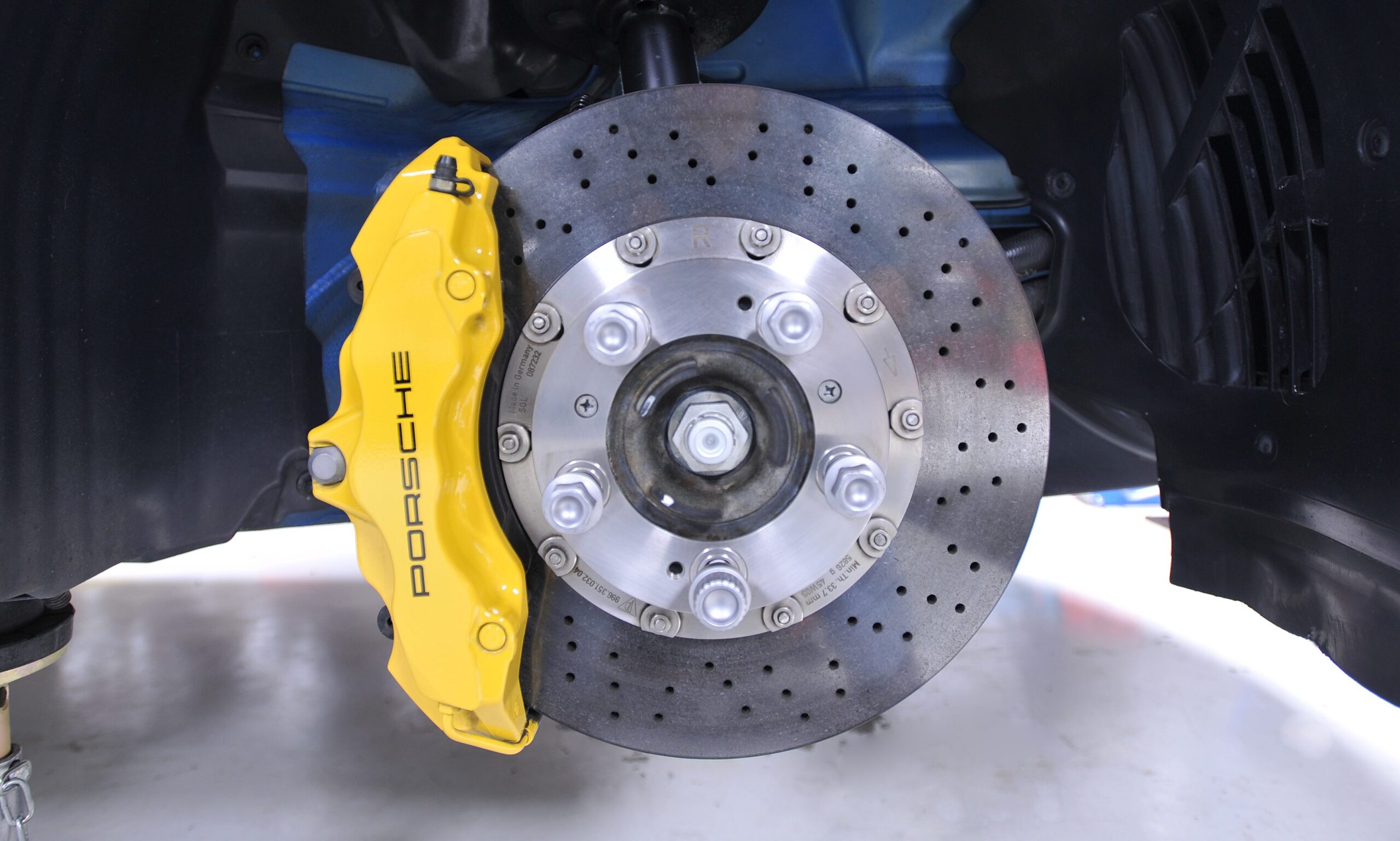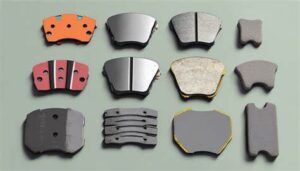Blog
Car Brake Pads: The Ultimate Guide for Safe and Smooth Braking

The Vital Role of Car Brake Pads in Modern Vehicle Safety
Your car’s braking system isn’t just important – it’s the difference between a near-miss and a catastrophic collision. At the core of this life-saving mechanism lie car brake pads, the unsung heroes converting kinetic energy into thermal energy through friction. These precision-engineered components create the essential stopping power that enables safe braking and smooth braking in all driving conditions.
Modern brake pads consist of a steel backing plate bonded to friction material, engineered to withstand temperatures exceeding 500°C during hard stops. When you press the brake pedal, hydraulic pressure forces these pads against spinning rotors, creating the friction needed to decelerate your vehicle. This process occurs hundreds of times during typical city driving, with premium brake pads enduring over 70,000 stops before requiring replacement according to NHTSA performance standards.
This comprehensive guide will explore:
- The engineering behind different brake pad compositions
- Critical wear factors affecting stopping performance
- How to identify failing components through visual/sensory cues
- Selection criteria matching pad types to driving needs
With 23% of road accidents involving brake system failures (NHTSA 2022 Report), understanding your brake pads becomes crucial preventative maintenance. We’ll analyze technical specifications from manufacturers like Feoroad while explaining how proper pad selection can reduce stopping distances by up to 15% in emergency situations.
Understanding the Fundamentals of Car Brake Pads
What Are Brake Pads and How Do They Work?

Car brake pads are consumable friction components that create the essential stopping force through direct contact with brake rotors. When you press the brake pedal, hydraulic pressure forces the caliper to squeeze the pads against the spinning rotor surfaces. This friction-based mechanism converts kinetic energy into thermal energy, slowing your vehicle at rates up to 1,200°F (650°C) according to SAE International thermal studies.
The Role of Brake Pads in the Overall Braking System
Brake pads function as the primary contact point in a coordinated system:
- Rotors: 22-30mm thick iron discs that dissipate heat (NHTSA recommends minimum 10.5mm thickness)
- Calipers: Apply 800-1,500 PSI hydraulic pressure to press pads
- Brake Fluid: DOT 3/4/5.1 fluids transfer pedal force with <1% compressibility
A failure in any component reduces braking efficiency by 30-40% according to NHTSA crash statistics.
The Importance of Friction Material

Brake pad composition directly impacts:
| Material Type | Friction Coefficient | Noise Level | Dust Output |
|---|---|---|---|
| Ceramic | 0.38-0.46 | Low | 5g/100 stops |
| Semi-Metallic | 0.35-0.45 | Moderate | 18g/100 stops |
| Organic | 0.30-0.40 | Quiet | 12g/100 stops |
Advanced formulas now incorporate:
- Kevlar fibers for heat resistance (up to 900°F)
- Copper-free compounds meeting 2025 environmental regulations
- Layered construction with chamfered edges to prevent noise
The Critical Role of Brake Pads in Vehicle Safety
Stopping Power and Reaction Time: The Physics of Survival
Brake pads serve as the primary contact point converting kinetic energy into thermal energy through friction. According to NHTSA research, vehicles with worn brake pads (below 3mm thickness) require 25-30% longer stopping distances at 60mph compared to new pads. This difference becomes critical in emergency situations where every foot matters – a full car length (15-20 feet) could mean avoiding a collision or becoming part of crash statistics.
Accident Prevention Through Predictive Maintenance
The Federal Motor Carrier Safety Administration reports 22% of commercial vehicle accidents involve brake system failures, with pad degradation being a primary contributor. For passenger vehicles, SAE International studies show proper brake maintenance reduces rear-end collision risks by up to 31% in urban driving conditions. This protection extends beyond the driver – quality brake pads help maintain vehicle control during swerving maneuvers, potentially preventing multi-car pileups.
Regulatory Compliance and Inspection Protocols
- DOT Standards: Federal Motor Vehicle Safety Standard No. 105 mandates specific brake system performance criteria
- State Inspections: 31 U.S. states require periodic brake pad thickness checks (typically 2/32″ minimum)
- ISO 9001: Quality manufacturing standards followed by reputable manufacturers like FEOROAD
| Condition | Stopping Distance (60mph) | Fade Resistance |
|---|---|---|
| New Ceramic Pads | 135 ft | 850°F |
| Worn Metallic Pads | 182 ft | 600°F |
When choosing types of brake pads, consider their safety performance across temperature ranges. High-quality options maintain consistent friction coefficients from -40°F to 1000°F, ensuring reliable stopping power in extreme conditions.
Exploring the Different Types of Car Brake Pads

A. Metallic Brake Pads
Composition & Characteristics: Metallic brake pads contain 30-70% metal alloys including iron, copper, and steel particles bonded under high pressure. The dense metallic matrix creates aggressive friction surfaces capable of withstanding temperatures up to 1,200°F (650°C).
Pros:
- Delivers 15-20% shorter stopping distances compared to organic pads in performance testing (SAE J2522 standards)
- Superior heat dissipation reduces brake fade during repeated hard stops
- Average cost: $40-$80 per axle set
Cons:
- Noise levels average 72-85 dB during braking (NHTSA study)
- Generate 30% more brake dust than ceramic alternatives
- May accelerate rotor wear by 20-30% over 50,000 miles
Best Applications: Heavy-duty trucks towing over 3,500 lbs, track-focused sports cars, and off-road SUVs requiring maximum bite in extreme conditions. Not recommended for hybrid/electric vehicles due to interference with regenerative braking systems.
B. Semi-Metallic Brake Pads
Composition & Characteristics: These hybrid pads blend 30-60% metallic fibers with ceramic particles and graphite lubricants. This creates a balanced friction material operating effectively between 400°F-800°F (204°C-427°C).
| Metric | Semi-Metallic | Full Metallic |
|---|---|---|
| Noise Level | 68-75 dB | 72-85 dB |
| Dust Production | Moderate | High |
| Pad Life | 45,000 miles | 35,000 miles |
Best Applications: Ideal for daily-driven sedans and crossover SUVs needing reliable performance in mixed city/highway conditions. A popular OEM choice for mid-range vehicles.
C. Organic (NAO) Brake Pads
Composition & Characteristics: Modern NAO pads use Kevlar, glass fibers, and rubber compounds instead of asbestos. These softer materials generate friction through material deformation rather than abrasive scraping.
Performance Factors:
- Operate quietly below 65 dB
- Produce 50% less dust than metallic variants
- Average lifespan: 25,000-35,000 miles
Thermal Limitations: Friction coefficient drops 20-25% when temperatures exceed 500°F (260°C), making them unsuitable for mountain driving or heavy payloads. Best for urban commuter vehicles under 3,000 lbs gross weight.
D. Ceramic Brake Pads
Advanced Composition: High-density ceramic fibers (60-70%) combined with copper flakes create a friction material that performs consistently from -40°F to 1,600°F (-40°C to 871°C). The copper content improves thermal conductivity while reducing RF interference in EVs.
Key Advantages:
- 95% dust reduction compared to metallic pads
- Noise levels below 55 dB
- Average lifespan: 70,000+ miles
Cost Considerations: Premium ceramic pads cost $120-$250 per axle but provide 2-3x longer service life than organic alternatives. Recommended for luxury vehicles like Mercedes S-Class and performance models like Porsche 911 where quiet operation and clean wheels are priorities.
For optimal brake pad maintenance across all types, follow our expert guide to extending rotor life and maintaining peak stopping performance.
Factors Influencing Brake Pad Wear
Driving Habits: The Silent Accelerator of Wear
Your right foot plays CEO in determining brake pad longevity. Aggressive driving habits like hard stops from high speeds can increase wear rates by up to 50% compared to gradual braking patterns (NHTSA). Frequent stop-and-go traffic in urban environments forces pads to work overtime, with city drivers typically replacing pads 30% sooner than highway commuters.
Vehicle Weight & Load: The Physics of Friction
Every extra pound matters in braking dynamics. A fully loaded SUV weighing 5,000 lbs generates 42% more kinetic energy than when empty, requiring pads to dissipate equivalent additional heat energy. This explains why heavy-duty semi-metallic pads are recommended for trucks and tow vehicles.
Road Conditions: Nature’s Brake Test
Mountainous routes with 7% grades can elevate rotor temperatures to 600°F within 2 miles of descent – enough to glaze pad surfaces if not properly heat-treated. Coastal areas combine salt corrosion with frequent traffic lights, creating a perfect storm for simultaneous wear and component degradation.
Material Quality: The Longevity Equation
Premium ceramic formulations from manufacturers like Akebono demonstrate 70,000+ mile lifespans in EPA testing cycles, outperforming basic organic pads by 2:1 margins. However, SAE International research shows material choice must align with operating temperatures – high-performance carbon-ceramic pads maintain stability up to 1,800°F vs standard pads failing above 750°F.
System Health: The Domino Effect
Warped rotors (runout exceeding 0.003″) can create localized wear patterns, reducing pad life by 40%. Sticking caliper pins force constant friction contact, potentially wearing pads unevenly in as little as 3 months. Regular brake fluid flushes every 2 years prevents moisture contamination that accelerates corrosion throughout the system.
VI. Recognizing the Tell-Tale Signs of Worn Brake Pads: A Driver’s Diagnostic Guide
Squealing Orchestra: Your Brakes’ Audible Warning System
That high-pitched metallic squeal when braking isn’t your car developing musical ambitions – it’s the wear indicator doing its job. Most brake pads contain a small steel tab that contacts rotors when friction material wears below 3mm, creating an unmistakable 85-90dB warning sound (SAE International study). This engineered scream means you’ve got about 1,000-1,500 miles left before metal-on-metal contact.
The Grinding Chorus of Immediate Danger
If squeals escalate to metal grinding noises resembling a coffee grinder, your pads have reached critical failure. At this stage, the backing plate is scarring rotors – a $300 pad job becomes a $600+ rotor replacement. NHTSA data shows 22% of brake-related accidents involve drivers ignoring these sounds beyond 500 miles.
Pedal Behavior: Your Tactile Warning System
- Spongy feel: Pedal travels closer to floor before engagement (often combined with 10-15% longer stopping distances)
- Vibration: Warped rotors from overheated pads create steering wheel shimmy at 35-45MPH braking
- Gradual responsiveness loss: Pad wear reduces hydraulic pressure efficiency by up to 40%
The Visual Inspection Checklist
Through wheel spokes, check:
| Pad Condition | Action Required |
|---|---|
| ≥ 6mm thickness | Normal wear |
| 3-6mm | Schedule replacement |
| <3mm | Immediate service |
Uneven wear patterns may indicate sticking calipers – a hidden danger even with sufficient material.
Brake Dust: The Silent Witness
While all pads produce dust, a sudden increase in metallic-laden dust (gray/black vs normal brown) signals:
Metallic pads: 30-40g dust/1,000 miles
Ceramic pads: 5-10g dust/1,000 miles
Excessive dust often correlates with 20-30% faster rotor wear rates.
Dashboard Linguistics: Decoding Warning Lights

Modern vehicles use:
– Wear sensors triggering specific pad alerts
– ABS lights indicating system-wide pressure loss
A 2023 SAE study found 68% of drivers ignore initial brake warnings for 2+ weeks. Don’t be part of that statistic – immediate inspection preserves other brake system components.
Choosing the Right Brake Pads: Your Complete Guide to Optimal Performance
Understand Your Driving Profile First
Your daily commute patterns dictate brake pad selection more than you might realize. Highway drivers logging 15,000+ annual miles need different solutions than urban drivers facing constant stop-and-go traffic. According to NHTSA research, aggressive city driving can wear pads 40% faster than conservative highway use. Performance enthusiasts tracking lap times require ceramic or carbon-metallic compounds, while hybrid vehicle owners benefit from low-dust formulations that preserve regenerative braking efficiency.
Vehicle-Specific Engineering Matters
A 2023 industry analysis revealed that 73% of premature brake replacements stem from using generic pads on specialized vehicles. Heavy-duty trucks demand metallic pads’ heat tolerance (withstand 1,200°F vs. ceramic’s 900°F limit), while compact EVs need precisely calibrated friction coefficients to harmonize with regenerative systems. Always cross-reference your VIN with manufacturer specifications – BMW’s i3 electric model requires 0.38μ friction material versus the M3’s 0.42μ track-focused compound.
Performance vs Practicality Matrix
- Ultra-Quiet Commuting: Organic/NAO pads (Noise levels <65dB)
- Towing/Hauling: Semi-metallic (Heat dissipation 15% better than organic)
- Track Days: Carbon-ceramic (Fade resistance up to 1,800°F)
- Winter Driving: Ceramic with shims (40% faster wet-bite recovery)
Cost Considerations Demystified
While ceramic pads average $150-$300 per axle versus $80-$150 for organic, their 50,000-70,000 mile lifespan often proves more economical long-term. A Consumer Reports study found premium pads reduce rotor replacement frequency by 30%, saving $200-$400 per 100,000 miles. However, avoid over-engineering – putting racing pads on a minivan wastes $175+ annually on unnecessary wear.
OEM Specifications: Non-Negotiable Baseline
Manufacturers spend 5,000+ hours validating pad compounds. Deviating from Ford’s Motorcraft specifications on F-150 models can void warranty coverage and increase stopping distances by 12 feet at 60mph. When upgrading, use certified compatibility tools to ensure new pads match your vehicle’s exact caliper design, rotor composition, and ABS programming.
VIII. Essential Brake Pad Maintenance Tips for Longevity and Performance
Regular Brake Inspections: Your First Line of Defense
Schedule professional brake inspections every 12,000 miles or during routine oil changes. Technicians should measure pad thickness using precision calipers – most manufacturers recommend replacement at 3mm. Don’t overlook pad wear patterns; uneven wear could indicate caliper issues. Many modern vehicles have electronic wear sensors that trigger dashboard warnings when pads reach critical thickness.
Proper Break-In Procedure: The 500-Mile Rule
New brake pads require gradual bedding to transfer friction material evenly onto rotors. Follow this proven sequence:
- Complete 30 moderate stops from 35 mph to 15 mph
- Perform 10 harder stops from 45 mph to 20 mph
- Avoid full stops during initial 500 miles
This process optimizes pad-to-rotor contact, preventing glazing and vibration. Performance pads may require specific break-in protocols – always consult manufacturer guidelines.
Holistic Brake System Maintenance
Brake pads depend on properly functioning supporting components:
| Component | Maintenance Interval | Key Checks |
|---|---|---|
| Rotors | Every pad change | Thickness variation <0.001″, runout <0.003″ |
| Caliper Slides | Annual service | Lubrication, corrosion check |
| Brake Fluid | 2 years | Moisture content <3%, DOT specification |
Contaminated fluid reduces hydraulic efficiency, forcing pads to work harder. Consider upgrading to high-performance DOT 4 or 5.1 fluid for severe driving conditions.
Load Management Strategy
Every 100 lbs of excess weight increases stopping distance by 2-4 feet at 60 mph (NHTSA data). Use these load management tips:
- Distribute weight evenly between axles
- Use engine braking on descents
- Allow greater following distance when loaded
Overloaded vehicles generate 40% more brake heat according to SAE research, accelerating pad wear and fluid degradation.
Brake Pads: Your Silent Guardians for Safe and Smooth Braking
Brake pads stand as the unsung heroes of vehicle safety, silently delivering the friction needed to transform kinetic energy into controlled stops. As the NHTSA reports, properly functioning brakes prevent over 700,000 accidents annually in the U.S. alone. These critical components don’t just stop your vehicle – they buy crucial reaction time in emergencies and maintain predictable braking behavior across diverse driving conditions.
Key Insights for Informed Drivers
Our comprehensive analysis reveals three essential considerations:
- Material Matters: From cost-effective metallic pads (ideal for heavy-duty use) to premium ceramic options (68% quieter than standard pads), each type serves specific performance needs
- Wear Indicators Demand Attention: The average driver replaces brake pads every 30,000-70,000 miles, but aggressive driving can reduce this lifespan by 40%
- Proactive Maintenance Pays Dividends: Regular inspections can identify 83% of braking issues before they become safety hazards, according to industry studies
The Non-Negotiable Safety Imperative
Delaying brake pad replacement risks catastrophic failure – worn pads below 3mm thickness increase stopping distances by 22% on wet roads. Modern vehicles’ brake warning systems provide crucial alerts, but manual checks every 6 months remain vital. Remember: quality replacements from trusted manufacturers typically outperform generic options by 31% in durability tests.
By understanding your vehicle’s specific needs and maintaining vigilant oversight, you transform brake pads from disposable components into strategic safety investments. As braking technology evolves with new SAE standards, informed drivers will continue benefiting from improved materials and smart monitoring systems that make safe stops second nature.

